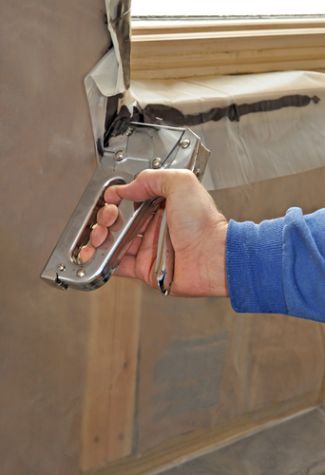Preventing Home Moisture Problems
There are a variety of actions you can take to get home humidity and moisture problems under control. They vary in complexity and cost - while some are relatively involved, other steps are actually quite simple.
Easy ways to control moisture

Installing good quality storm windows is an easy, yet effective way to curtail condensation problems caused by warm indoor air colliding with your cold window panes. Not only will they will help to keep your windows from getting fogged up or icy, but they will also help you control your heating costs.
Using a dehumidifier is another easy way to reduce your home's humidity level. Make sure to get one that is powerful enough to handle the size and humidity of your space. Generally, when the weather is cold outside, you should keep your home's humidity level low, in order to keep condensation at bay. During periods of high humidity in the summer, both air conditioners and dehumidifiers can help to lower the humidity inside your home.
Proper ventilation is essential to avoiding moisture problems. It is important to make sure that hot air can exit your home through natural air flow, while also keeping your home free of cracks or openings around doors, windows, or electrical outlets, where new humid air could enter. Besides reducing indoor moisture, ventilation also helps to keep indoor pollutants and odors under control.
Vapor barriers
 Vapor barriers play an important role in controlling moisture in homes. They block or slow the movement of water vapor through surfaces like walls or floors, thereby helping to keep moisture from spreading. During construction, vapor barriers are usually attached to a house's framing beneath the sheetrock on the exterior wall. Typical barriers are heavy, clear plastic sheets stapled onto the wood studs before sheetrock covers the walls. Coatings, like paint, can also act as water vapor barriers.
Vapor barriers play an important role in controlling moisture in homes. They block or slow the movement of water vapor through surfaces like walls or floors, thereby helping to keep moisture from spreading. During construction, vapor barriers are usually attached to a house's framing beneath the sheetrock on the exterior wall. Typical barriers are heavy, clear plastic sheets stapled onto the wood studs before sheetrock covers the walls. Coatings, like paint, can also act as water vapor barriers.
The extent to which your vapor barrier is airtight will determine its effectiveness. If you have a plastic membrane barrier, it is important that any holes in it, like where wires pass through, are sealed up. Keep an eye out for potential signs of vapor barrier failure, like mold or peeling paint on the inside of exterior walls, along with an obviously high humidity level. Consult a construction professional to assess whether your home's vapor barriers are damaged or if your walls need additional treatment.
Outside your home
 Finally, there are steps you can take outside your home to keep moisture from getting inside the structure. Make sure your roof gutter drainage system functions well (see our how to clean gutters). Also, if possible, ensure that your yard is sloped away from your house on all sides.
Finally, there are steps you can take outside your home to keep moisture from getting inside the structure. Make sure your roof gutter drainage system functions well (see our how to clean gutters). Also, if possible, ensure that your yard is sloped away from your house on all sides.
Take steps to dampness-proof the portion of your foundation wall that is below grade, along with your footings if possible, to keep both from absorbing ground water. One way to do this is to coat the exterior of your foundation walls and footings with a moisture proof, tar-based membrane. Also, try to verify that your buried footing drainage is diverting ground water away from your foundation. If the soil outside your foundation becomes saturated, water will try to penetrate into your basement, potentially causing expensive trouble (see our articles on roof drainage and foundation cracks).
If you get in the habit of checking for signs of excess moisture and humidity in your home, you will be able to prevent a lot of costly damage. Of course, fix any problems you see immediately, and consult construction or mold professionals to help you assess and deal with any serious issues.
Image source: lorakutty
 The Preventing Home Moisture Problems by Water Damage Defense, is licensed under a Creative Commons Attribution-ShareAlike 3.0 Unported License.
The Preventing Home Moisture Problems by Water Damage Defense, is licensed under a Creative Commons Attribution-ShareAlike 3.0 Unported License.
